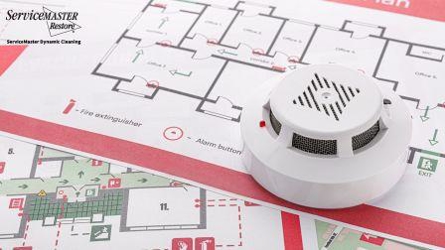A fire escape plan is a critical component of family safety, and it becomes even more complex when you have a diverse household. From little ones to elderly grandparents and individuals with disabilities, it's crucial to ensure everyone can evacuate safely in case of a fire. In this article, we'll guide you through the steps to create a comprehensive fire escape plan that addresses the unique needs of your family.
Step 1: Getting Started
- Family Meeting: Gather your entire family for a meeting to discuss the importance of a fire escape plan. Explain that this plan is designed to keep everyone safe, and participation from every member is crucial.
Step 2: Assessing the Situation
- Home Layout: Begin by creating a floor plan of your home, marking all exit points, including doors and windows, and potential hazards like stairs or obstacles that could impede escape.
- Individual Needs: Consider the unique needs of each family member. For young children, elderly grandparents, or those with disabilities, you may need additional assistance, such as wheelchairs, walkers, or mobility aids. Ensure these are easily accessible. Don’t forget your pets. Take into account who will wrangle the animals and any supplies you may need like a pet carrier or leash.
Step 3: Exit Strategies
- Primary and Secondary Exits: Identify primary and secondary escape routes from each room. In the event that one path is blocked, having an alternative route is crucial. Make sure everyone understands these routes. Test each window and door to make sure they can be opened quickly and easily.
- Additional Tools: Make sure you have the proper equipment installed such as a fire ladder if you are on the second floor or above. If you live in an apartment building, make sure everyone knows to use the stairs and not an elevator if you have one.
Step 4: Meeting Point
- Designate a Safe Meeting Point: Choose a location outside your home where everyone can gather after evacuating. This point should be far enough from the building to ensure safety but close enough for elderly family members.
Step 5: Practice and Education
- Fire Drills: Regularly practice your fire escape plan with your family. For little kids, make it a game to keep them engaged and reduce fear. Teach them how to stay low to avoid smoke inhalation and the importance of feeling doors for heat before opening them. Additionally, remind everyone to close the door behind them when exiting a room to help reduce fire and smoke damage.
- Educate About Fire Safety: Ensure that everyone in the family knows how to operate fire extinguishers and where they are located. Teach children how to call 911 in an emergency and make sure they understand the importance of providing their address.
Step 6: Assistance for Vulnerable Family Members
- Young Children: Assign an adult or older sibling to be responsible for young children during a fire drill or emergency evacuation. Make sure this person knows how to safely carry or guide the child.
- Elderly Relatives: For grandparents or elderly relatives, consider mobility aids like wheelchairs or walkers. Ensure these aids are readily accessible and practice using them during drills.
- Individuals with Disabilities: Discuss specific needs with family members who have disabilities. Identify any equipment or assistance required for their safe evacuation. Keep communication devices, such as a whistle or walkie-talkie, near them to maintain contact during emergencies.
- Family Pets: Determine who will be responsible for managing the pets. Consider common hiding places and alternative transportation methods if you are unable to readily access an animal's leash or carrier.
- Safety First: If you are unable to get to someone in the home needing assistance, get out and call 9-1-1 and tell the operators where the person is located.
Step 7: Stay Informed
- Emergency Services: Make sure everyone knows how to contact emergency services, including 911. Educate family members about when to call and what information to provide.
Creating a fire escape plan for your family may seem daunting, but it's a vital step in ensuring the safety and well-being of everyone in your household. Regular practice, open communication, and thoughtful consideration of individual needs will help your family be better prepared for any emergency, giving you peace of mind knowing you can all escape safely in the event of a fire. Remember, it's better to be overprepared than caught off guard in a crisis.


